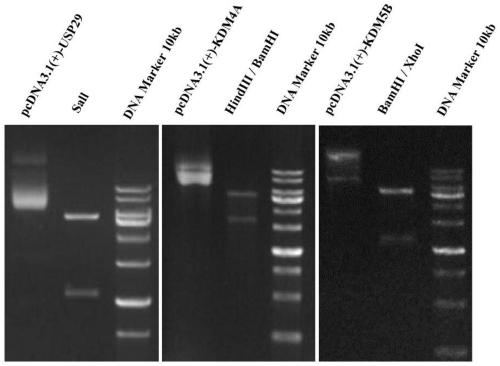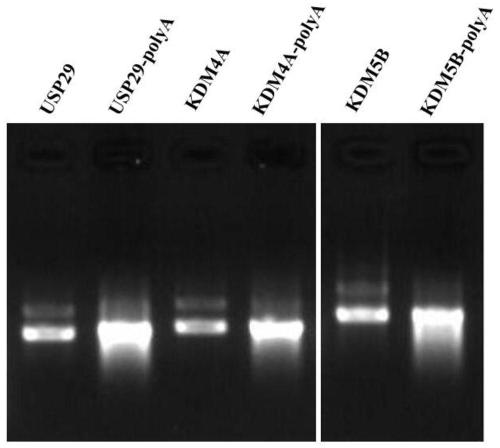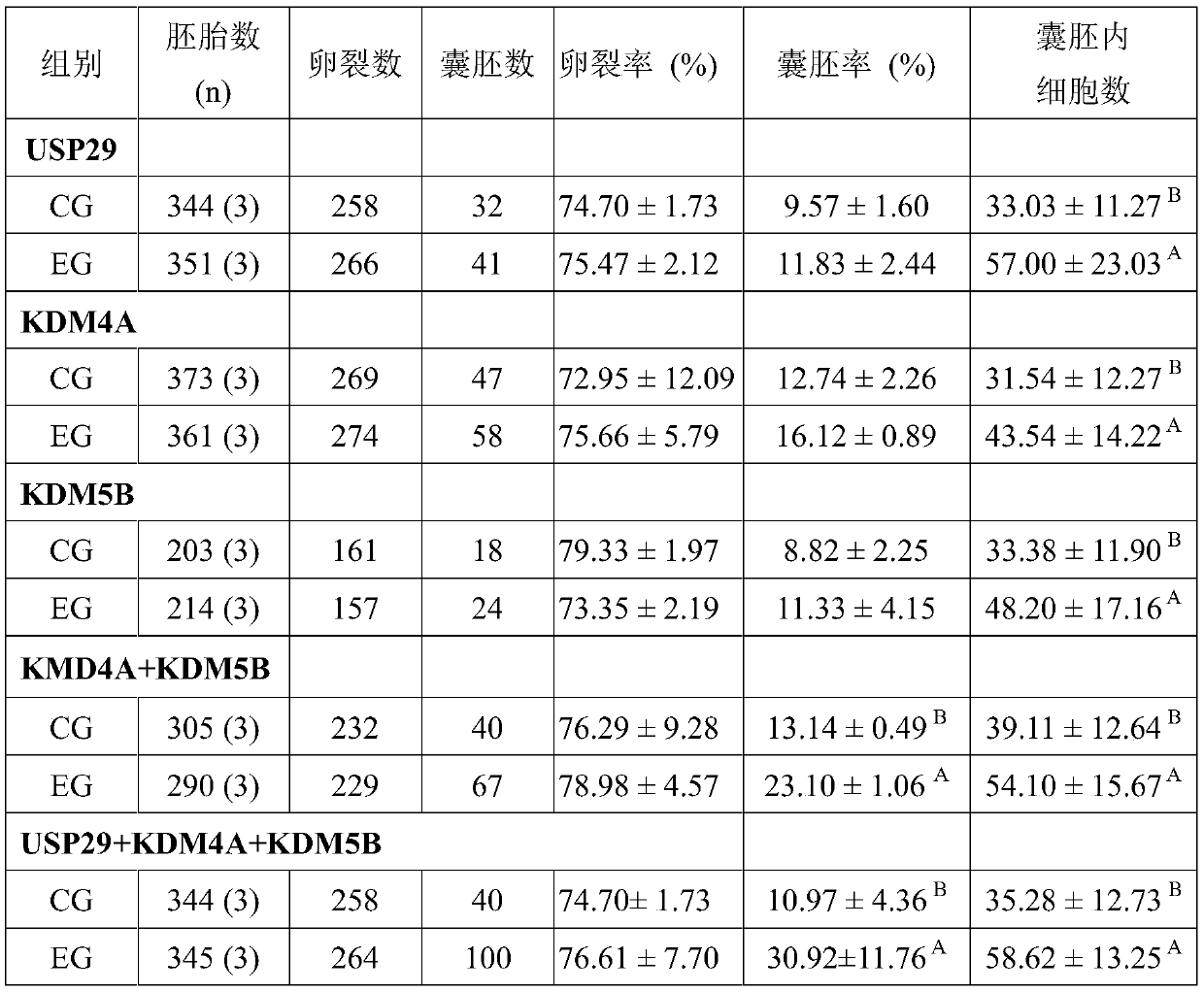Method for improving development efficiency of pig cloned embryos
A technology for cloning embryos and high efficiency, which is applied in the field of developmental efficiency of pig cloned embryos, and can solve problems such as the impact on the developmental potential of pig cloned embryos, which has not been reported.
- Summary
- Abstract
- Description
- Claims
- Application Information
AI Technical Summary
Problems solved by technology
Method used
Image
Examples
Embodiment 1
[0032] Example 1 Combined regulation of histone ubiquitination, H3K9me3 and H3K4me3 modification levels during early development of pig cloned embryos
[0033] 1. Acquisition of porcine in vitro matured oocytes
[0034] Pig ovaries were collected from the slaughterhouse, put into a thermos bottle filled with normal saline, and transported to the laboratory. The follicular fluid was aspirated with a sterile syringe, and then the cumulus cells were selected under a stereoscopic microscope to tightly wrap more than three layers, and the cytoplasm Uniform oocytes. in CO 2 After culturing in the incubator for 42-44 hours, suck out the oocytes and put them into a 1.5ml centrifuge tube containing 200μl of hyaluronidase, and then repeatedly blow and beat to remove the surrounding granulosa cells. The oocytes with obvious polar bodies were selected under a stereomicroscope to be used as nuclear transfer recipients.
[0035] 2. Isolation and culture of porcine cloned donor cells
[00...
PUM
 Login to View More
Login to View More Abstract
Description
Claims
Application Information
 Login to View More
Login to View More - R&D
- Intellectual Property
- Life Sciences
- Materials
- Tech Scout
- Unparalleled Data Quality
- Higher Quality Content
- 60% Fewer Hallucinations
Browse by: Latest US Patents, China's latest patents, Technical Efficacy Thesaurus, Application Domain, Technology Topic, Popular Technical Reports.
© 2025 PatSnap. All rights reserved.Legal|Privacy policy|Modern Slavery Act Transparency Statement|Sitemap|About US| Contact US: help@patsnap.com



